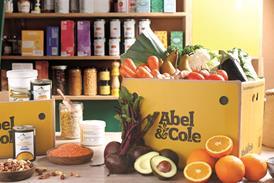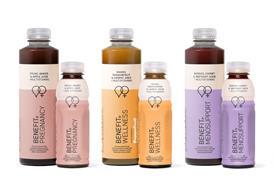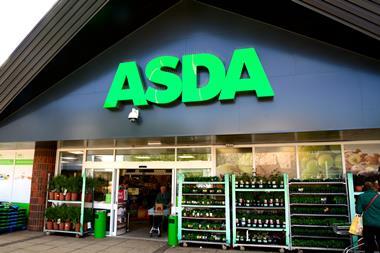Afry-up costs 13% more than it did a year ago, according to an article in the Daily Mirror last week. But the paper left out one ingredient synonymous with breakfast - and it's the one that would, certainly for some brands, have topped the list in terms of inflation.
In the past 12 months, the average price of a 500g Flora Light tub has risen 50% from 98p to £1.47, while 250g of Anchor Spreadable has jumped 11% to £1.09, according to The Grocer 33 price survey. The culprit? The rocketing cost of dairy, oils and other raw materials.
Of course, this has made the category, in terms of value growth, look pretty healthy. Total sales were up 10.5% to £952.7m, according to TNS [52w/e 23 March 2008]. In reality, the number of consumers buying butters and spreads has remained fairly static, with volume up just 0.3%.
What movement there is, then, has come in what they are buying, and in keeping with the main trend of the past few years, spreadable is the obvious winner once again, overtaking wellbeing to become the biggest and fastest-growing sub-category, with sales jumping 22.3% to £257.1m [TNS].
But as prices soar, cost-consciousness is having a demonstrable impact on the market. As consumers look for cheaper options, the first beneficiary is own label. Almost 70% of households now buy own-label butters at least once a year, up 5.8% year-on-year [TNS]. And their appeal to belt-tightening consumers saw own-label sales easily outperform the total category. They were up an impressive 22.4% to £168.2m, taking own label's market share to 17.7%.
Also benefiting from its price positioning is the everyday butter sector, with sales growing 20.6% to £179.3m, reversing last year's 6.6% decline [TNS].
So are we set for a return to value at all costs? Will all the branding and innovation that has taken place in the market be jettisoned? Certainly innovation around health appears to be falling on deaf ears, with a 10.5% decline in sales of 'health' butters and spreads.
But the big brands are confident the market can withstand the downturn. "One of the key trends within butter and spreads is the growing demand for natural and quality ingredients. We believe this will prove a stronger selling point in the long term than price," says Lorraine Crowe, senior brand manager for Arla's Anchor brand.
And the growth of everyday butter is as much a symptom of the switch to natural as a reflection of cost consciousness, adds Stuart Ibberson, senior brand manager for Arla's sister brand Lurpak. "Block butter has attracted new buyers who recognised that it represents the pinnacle of taste and naturalness within the market," he claims.
Taste and naturalness are two of the trump cards that Lurpak clearly delivers and, having done such a good job extending the range into spreadable, including unsalted and organic variants, it was no surprise when, last year, Lurpak usurped Flora's crown to become the bestselling spread.
This year it's gone still further. On the back of a £13m campaign to develop the Good Food Deserves Lurpak initiative, the latest figures out last month showed Lurpak's lead had widened to £32m, with sales increasing by 20% to £218.6m compared with Flora's increase of 0.7% to £186.5m [Nielsen]. And volume was up 5.2% (with Flora down 5.7%) as household penetration increased 11% in the past year.
Arla's success in the market has not been restricted to Lurpak, either. Anchor has also seen strong growth, with value growth at 15%, widening the gap on Dairy Crest's number four brand Clover to £22m. Together, the two brands have been instrumental in driving category growth: £49m of the £99m overall growth is from these two players, it claims.
Anchor now plans to add an unsalted version of its block butter to the portfolio. Sales of its block butter were up 5% to £32m according to Nielsen [52w/e 19 April 2008] and it is now being heavily promoted in terms of its free-range credentials, with another £10m being ploughed into advertising this year.
Where does this leave Unilever? In a commodity market and up against the fast-consolidating dairies, Unilever is not in the strongest position, and its heritage for adding value through branding must have been severely tested last year when Asda delisted I Can't Believe It's Not Butter because "it wasn't a brand" according to food trading director Darren Blackhurst.
But the bigger issue was the decline in volumes of Flora. Mirroring the trend seen in the yoghurt drinks sector, sales of so-called functional variants in the Flora stable have typified the problems Flora has suffered, as consumers become confused about the various health benefits offered. "Consumers are moving towards a more balanced approach to managing their health, looking for taste as well as health, and favouring natural products rather than those with added benefits," says Emma Metcalf-King, Sainsbury's senior buyer for milk, butter, spreads and cream.
According to Arla, the problems of the Flora brand extend deeper. "The trend towards natural foods has left brands full of additives struggling to satisfy consumer needs," says an Arla spokesman. And changes in legislation are also impacting. "Flora can no longer claim to be 'low in saturated fat' - a real weakness for a 'health' brand," he adds.
Unilever admits 2007 was a "challenging year" but says it is determined to fight back and insists 2008 has started better. "We are already seeing signs of improvement," says a spokeswoman, citing Flora Omega-3, up 3.6% over the past 12 weeks, and Flora Buttery growing 80% since its relaunch in September 2007. Flora Pro-activ is worth £65m and has remained the UK's bestselling cholesterol-lowering brand.
"The battle this year," says Unilever, "is to educate consumers about the benefits of spreads and combat consumer perception of good and bad fats. We aim to achieve this by supporting the category, to add value and growth to the market, while communicating that Flora contains natural seed oil and is a healthier alternative to butter.
"We're armed with our Seeds communication and the Cooking with Schools activity (see p48). We hope to encourage children to think more about their diet and the impact this can have in later life on their heart." n



















No comments yet